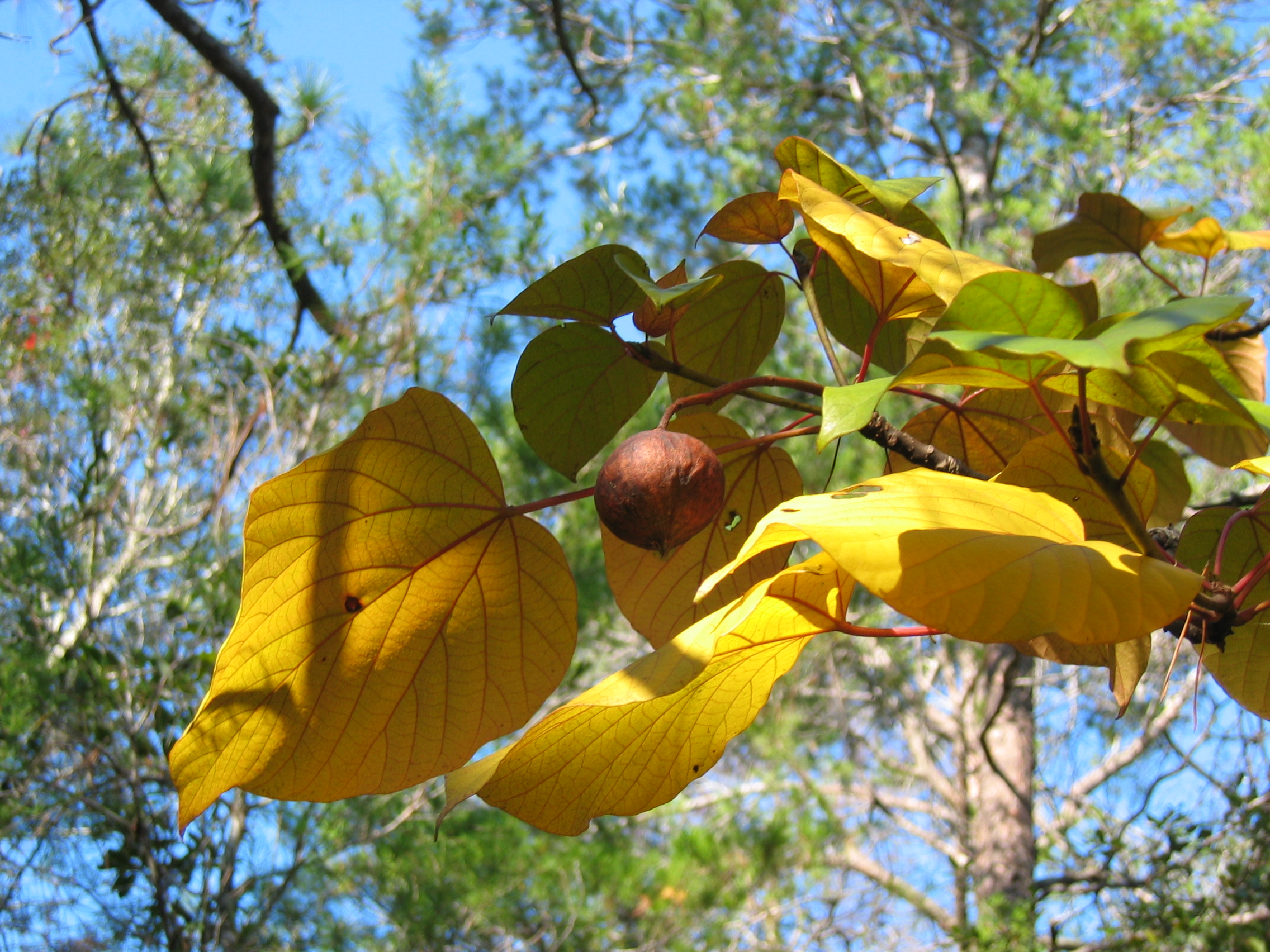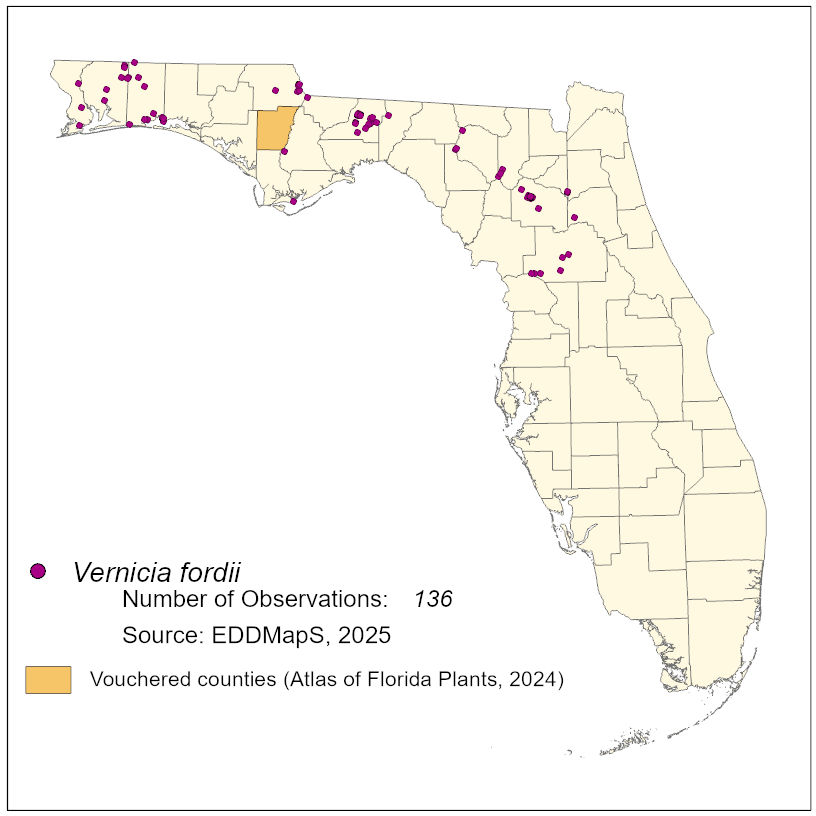Common Name: tung oil tree
Family: Euohorbiaceae
Common Synonyms: none
USDA Hardiness Zone: NA
Growth Habit: Tree
Origin: China
FISC Category: 2
FDACS Listed Noxious Weed: No
Introduction Date: During World War II (1939-1945)
IFAS Assessment:

Deciduous tree to 12 m high. The petioles have 2 red glands at the tip. Leaves alternate, heart-shaped, lobed, dark green, to 15 cm wide. Flowers appear before leaves develop and are showy, white with red center. Fruits sphere to pear-shaped, and are green to dark brown/purple when mature. Each fruit has 4 to 5 seeds and tungoil is extracted from the kernals.
Disturbed areas, successional hardwood forest
All portions of the plant are toxic. One seed can be deadly. Plants are reproductive between 2 to 4 years old and can spread by fruits and vegetatively. Tung oil tree can grow in a wide array of habitats.

Preventative control is key to controlling this species. Limit planting and remove existing plants being careful not to spread seeds.
IFAS, Center for Aquatic and Invasive Plants. 2017. Aleurites fordii. http://plants.ifas.ufl.edu/plant-directory/Aleurites fordii/. Accessed September 18, 2017.
IFAS, UF, Assessment of Non-Native Plants in Florida's Natural Areas. 2017. Aleurites fordii. https://assessment.ifas.ufl.edu/assessments/aleurites-fordii/Accessed September 18, 2017.
Dave's Garden. 2017. PlantFiles: tung oil tree (Aleurites fordii).http:/davesgarden.com/guides/pf/go/72530/Accessed September 19, 2017.